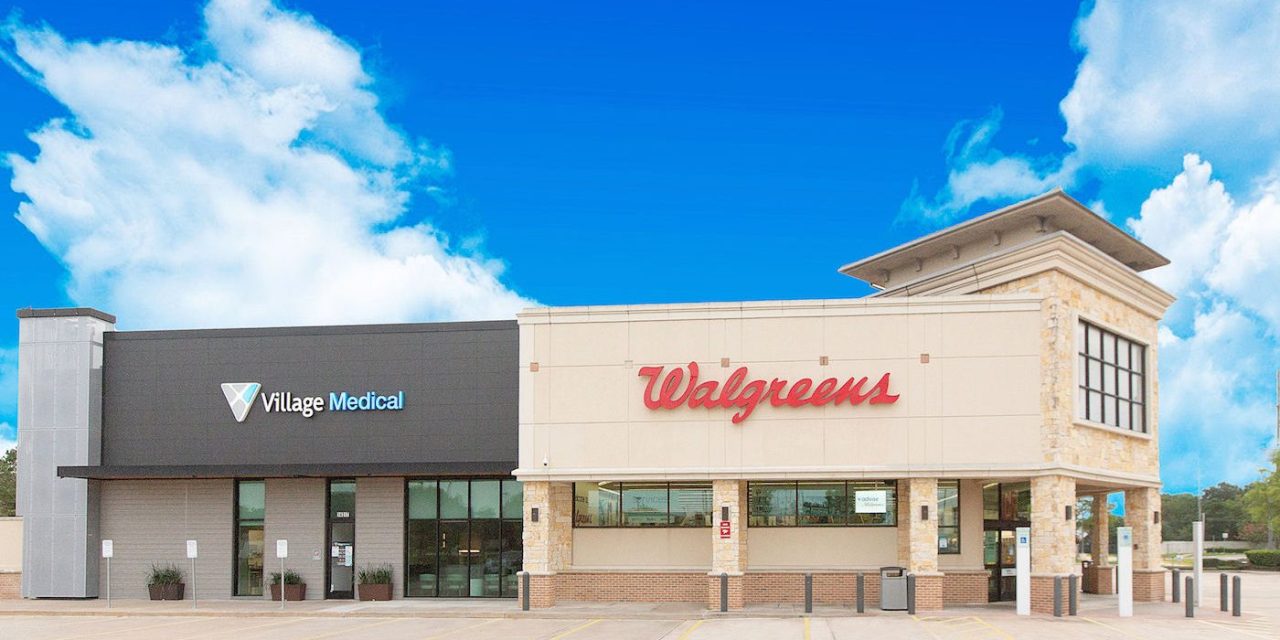Walgreens is the latest retailer to increase investment in health care

This week, Walgreens Boots Alliance’s VillageMD announced a merger with medical care centers operator Summit Health.
Together with Summit Health, the parent company of urgent care provider CityMD, the network of care centers have 680 locations in U.S. 26 markets. With the new $8.9 billion deal, Walgreens joins co-investor Cigna in backing these growing chains of care centers.
The news comes at a time when retail companies are heavily investing and integrating health care into their offerings. Last July, Amazon announced it will acquire primary care clinic operator 1Life Healthcare for $3.5 billion. Amazon already owns and operates digital pharmacy PillPack, which it purchased in 2019 for $750 million. In September, Aetna-owner CVS acquired home health care service Signify Health for $8 billion. Walgreens is trying to become more and more of a health care destination like its competitors, and this latest major investment signals the drugstore giant’s growing interest in delivering health care services to its customers.
While these bets don’t come cheap, companies like Walgreens expect to see a return on these investments in the coming years. And with the traffic boost from vaccination rollouts slowing down, drugstore chains like CVS and Walgreens are trying to continue diversifying their revenue sources.
Paul Schuhmacher, managing director of health care practice at AArete, a global management and technology consultancy firm, said with major retailers like Amazon and Walmart jumping into the medical space, “health care is becoming more member-centric.” For instance, with a lot of traditional providers and medical centers lacking marketing resources, Schuhmacher expects retailers to take advantage of this white space.
“It’s a large investment but it’s a big opportunity for future revenue,” he said, adding that operating health care centers gives retailers an opportunity to gain market share on standard primary care services like routine testing and vaccinations. According to Walgreens’ release, the company said it’s raising its U.S. health care sales for fiscal year 2025 to $14.5 billion to $16 billion, up from the previous estimate of $11 billion to $12 billion. Walgreens Boots Alliance also expects its health care business to become profitable by 2023. “This should also help increase sales by driving revenue to their pharmacies,” Schuhmacher said.
In October, Walgreens reported its health care segment brought in $622 million sales during the fourth quarter. However, it also experienced a decline in same-store retail sales, which Walgreens attributed to slowing traffic. The company reported a $415 million quarterly operating losses, compared to net income of $358 million the same period last year.
This added revenue will be another lifeline for retailers like Walgreens. This is especially important as pharmacies grapple with slowing Covid-19 vaccination traffic, which came with the halo effect of larger basket sizes as customers shopped during their vaccine appointment visits. Overall, major drug stores like Walgreens, CVS and Rite Aid saw traffic dip going into 2022, according to tracking by Gravy Analytics. Walgreens’ store foot traffic, for example, dropped 3% in January 2022 compared to January 2021, when Covid vaccines began to roll out.
“As Covid wanes and these sources of income dry up, chains like Walgreens and CVS are coming down to earth with a bump,” said GlobalData managing director Neil Saunders. Furthermore, drugstores’ retail segments are also slowing down as they lose customers interested in high-spend categories like beauty and wellness to retailers like Ulta Beauty and Target.
“These dynamics have made the businesses look for other opportunities. One of these comes from a deeper push into health care,” Saunders said, noting that health care is “relatively recession proof,” which makes it a sound financial sector for retailers trying to become a one-stop health and wellness destination.
As more players drop major cash on these ventures, eventually they will have to compete over customer loyalty, as well as health startup acquisitions.
For now, these retailers are tasked with setting up health care foundations that attract their everyday shoppers to seek out medical services with them. “As more retailers dive further into health care,” Schuhmacher said. “There will be a learning curve of understanding the operations side of the business and streamlining it over time.”
